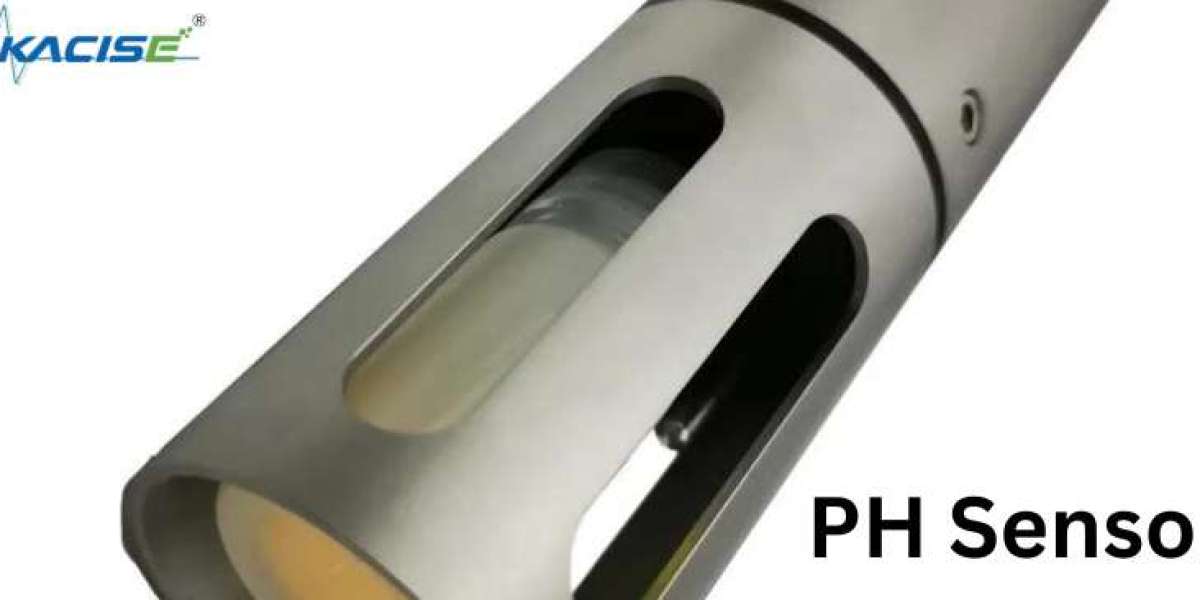In this blog, we’ll break down the technology behind pH sensors, their components, and how they provide accurate measurements of the pH level of a solution.
What is pH?
Before we dive into the mechanics of pH sensors, let’s briefly review what pH is. pH is a scale that measures the hydrogen ion concentration (H⁺) in a solution. The pH scale ranges from 0 to 14, with 7 being neutral. Values below 7 indicate acidity, and values above 7 indicate alkalinity. For example, lemon juice has a pH of about 2, which is highly acidic, while baking soda has a pH of around 9, making it alkaline.
The Basic Principle of pH Measurement
A pH sensor functions based on the principle of electrochemistry. It determines the concentration of hydrogen ions in a solution by creating an electrical signal that corresponds to the pH level. The sensor typically consists of two main parts: a reference electrode and a glass electrode.
The Glass Electrode: The Heart of the Sensor
The glass electrode is the critical component of most pH sensors. It is made from special glass that is permeable to hydrogen ions. This glass is typically shaped as a bulb at the tip of the electrode, which comes into direct contact with the solution being tested. Inside the bulb, there is a small amount of a known solution with a stable pH value. The glass electrode works based on the principle that when it comes into contact with the solution, the hydrogen ions from the solution interact with the glass surface.
This interaction causes a small voltage (electrical potential) difference between the solution inside the glass bulb and the solution outside. The intensity of the voltage is directly related to the concentration of hydrogen ions in the solution. The more hydrogen ions present (i.e., the more acidic the solution), the higher the voltage will be. Conversely, a lower concentration of hydrogen ions (i.e., in an alkaline solution) results in a lower voltage.
The Reference Electrode: Ensuring Stability
To measure the voltage generated by the glass electrode, the sensor also includes a reference electrode. The reference electrode is typically filled with a stable solution, such as potassium chloride (KCl), and it does not react with the solution being tested. Its primary function is to provide a constant reference voltage, ensuring that the voltage measured by the glass electrode is accurate and not influenced by external factors.
Together, the glass electrode and the reference electrode form a complete electrochemical cell. The potential difference between the two electrodes is measured by the sensor’s electronic circuitry. This voltage is then translated into a pH reading.
pH Sensor Calibration
To ensure the accuracy of pH measurements, sensors must be calibrated regularly. Calibration involves comparing the sensor’s readings against solutions with known pH values (typically pH 4, 7, and 10) to adjust for any variations or drift in the sensor’s performance over time. This is done using buffer solutions, which are precisely engineered to have a specific pH.
During calibration, the sensor is exposed to a series of standard solutions. The electronics of the pH meter adjust the sensor’s output to match the known values of these buffers, creating a baseline for future measurements.
Applications of pH Sensors
pH sensors are used in various applications, including:
- Water Treatment: Monitoring and controlling the pH levels of water ensures that it is safe for consumption and discharge into the environment.
- Agriculture: pH levels of soil influence plant growth, making pH sensors essential in precision farming to maintain soil health.
- Food and Beverage: The pH level of food affects its taste, preservation, and safety. Sensors help maintain quality control during processing.
- Industrial Manufacturing: Many chemical processes require precise pH control to ensure product consistency and safety.
- Aquarium Care: Aquarium owners use pH sensors to maintain the ideal environment for aquatic life.
Conclusion
In essence, a pH sensor works by measuring the electrical potential created when the glass electrode interacts with the solution being tested. The more hydrogen ions present, the stronger the electrical signal, which is translated into a pH value. These sensors are indispensable tools in many industries, offering precise, real-time measurements that help maintain balance and ensure optimal conditions for both human activities and natural processes.
Understanding the technology behind these sensors not only demystifies how they work but also emphasizes their importance in maintaining the quality and safety of various environments. Whether you're a scientist, a farmer, or someone simply looking to monitor the pH of your pool, knowing how a pH sensor works can give you a deeper appreciation for this essential tool.



